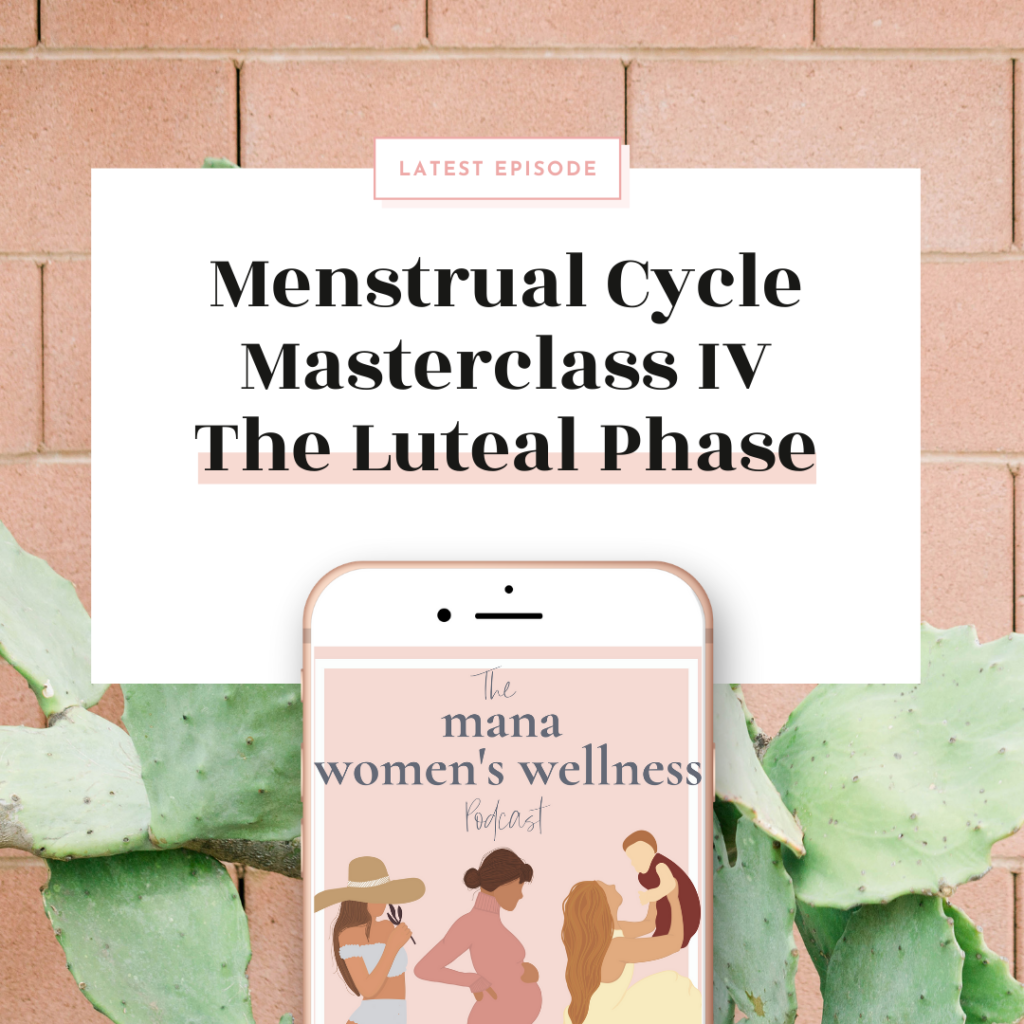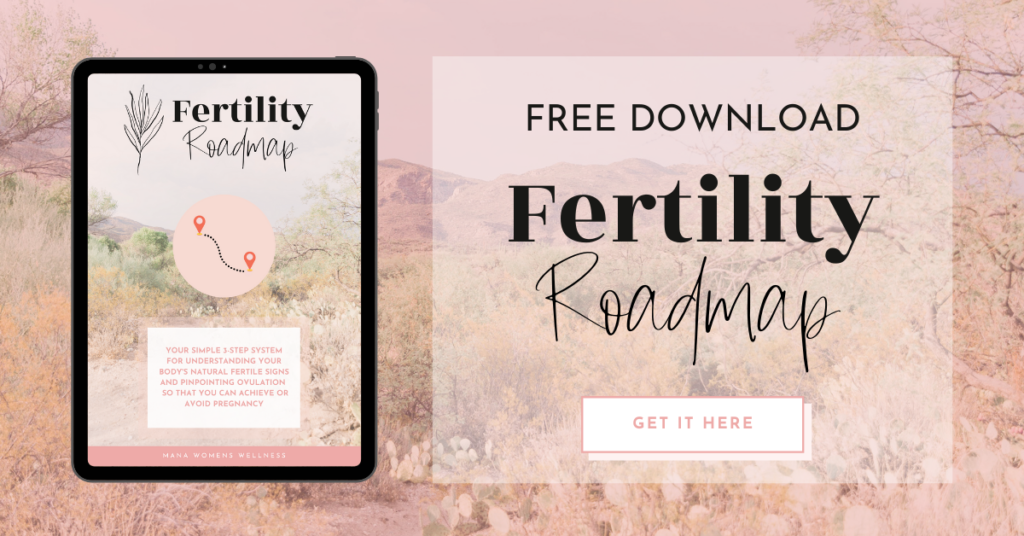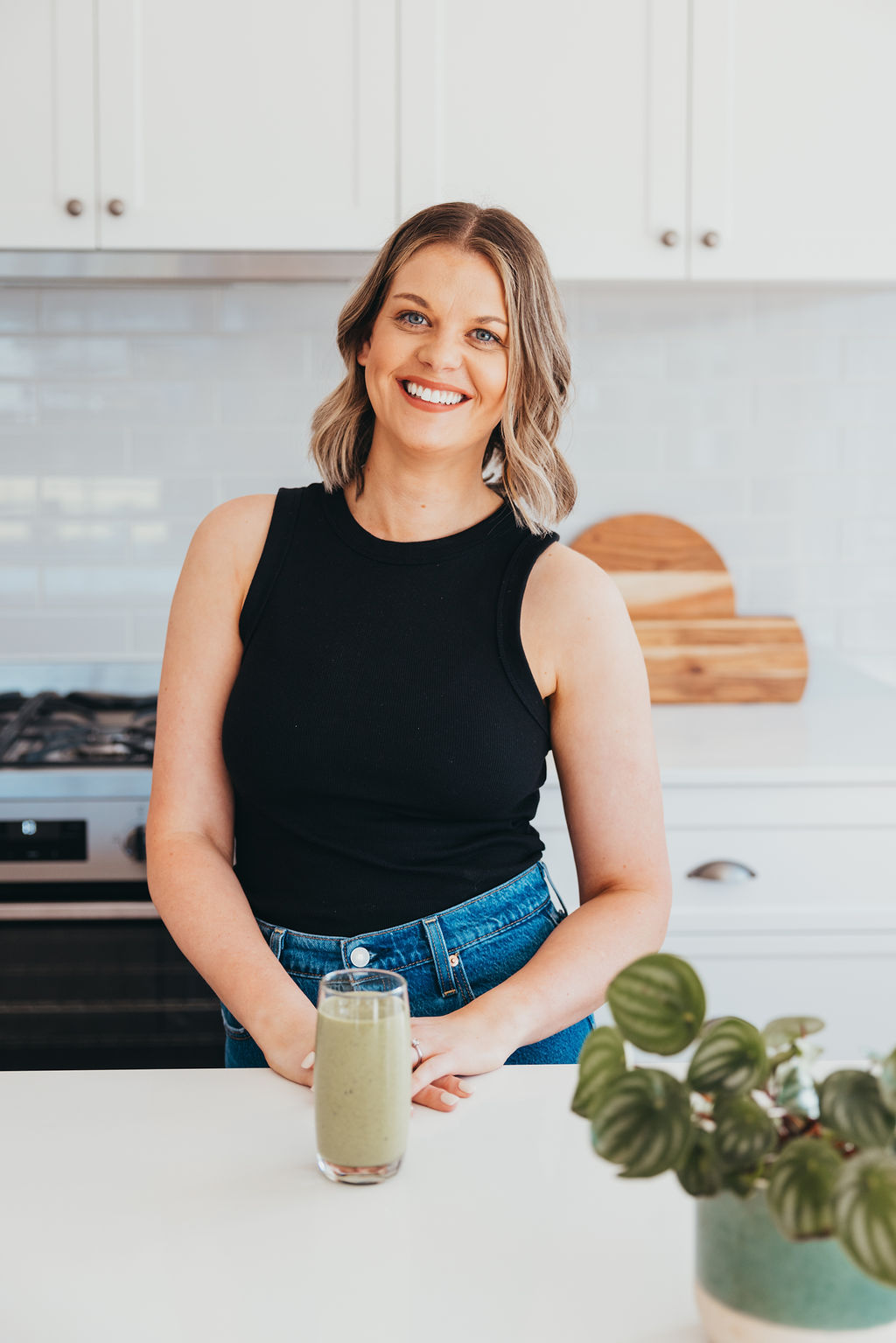
LISTEN ON
APPLE PODCASTS | SPOTIFY
Ever had a complete breakdown only to discover that your period came the next day and *maybe* you overreacted slightly?
Yep, I’ve been there!
Mood swings, PMS, breakouts – in this week’s podcast episode, we’re wrapping up the Menstrual Cycle Masterclass series and talking about the luteal phase. That window of time after ovulation has occurred and as your body is preparing for your next period. That window of time where those typical symptoms of PMS start to emerge…
Here’s what we cover in this episode:
- Why the luteal phase is like a party nobody showed up to
- The consistent and reliable non-fertile phase
- What happens after ovulation?
- The lead up to your period
- What actually causes your PMS symptoms, and what to do about it
- Working with your menstrual cycle, not against it

EPISODE TRANSCRIPT
Hello, and welcome to episode 15 of The Mana Women’s Wellness Podcast. I’m your host, Rachel and welcome to part four – the final chapter – of the Menstrual Cycle Masterclass. And today we are breaking down the luteal phase, that window of time between ovulation and out next period. And over the last three weeks we’ve really dived deep into each phase of the menstrual cycle, so what actually goes on inside our body, how this all ties in to our ultimate reproductive goal of ovulating and getting pregnant and keeping the human race alive…we’ve also talked a lot about how to support your body during each phase. We’ve talked about optimising your hormone balance and supporting what your reproductive system is actually doing through nutrition and the foods you eat, self-care and the way you look after your body, how each phase affects your sleeping patterns, your moods and we’ve talked about how you can change up how you exercise to support all of this too.
Now if you want the CliffsNotes version all of the information that we’ve covered in our Menstrual Cycle Masterclass series you can head over to www.fertilityco.com.au/lutealphase and grab the shownotes for today’s episode and I’ll include link to the entire masterclass series too.
If you want to dive deeper into how to support your body during each phase of the menstrual cycle, plus how it all ties together and all about hormones plus so much more, you can grab The Mana Guide to Understanding (and Loving!) Your Menstrual Cycle at my digital shop over on the website too. And if you head over to today’s shownotes or straight to www.fertilityco.com.au/freebook you can grab a free chapter of this book which gives you a really good and clear introduction to the menstrual cycle as well as outlining getting to know the hormones involved.
The Luteal Phase
The time when our body is waiting to see whether or not we’re pregnant, and if it realises that we’re not pregnant, the egg wasn’t fertilised this month, then all of the hard work in preparing the uterus for implantation of the embryo and beginning of pregnancy, well the body sorta says ok well that’s it, never mind and flushes everything out of the body as your next period. It’s a little like nobody showing up to a party. The food’s all cooked, the drinks are out, the room’s been decorated beautifully so it’s comfortable and inviting for the very honoured guest and nobody shows. Obviously our host is patient and optimistic that the special guest will turn up, but it reaches a point where that egg is well and truly gone. It hasn’t been fertilised, so it’s just died and broken down as it makes it ways to the uterus. And so, the party is cancelled, food’s thrown in the bin and the decorations are all pulled down. But the host is very optimistic and will try again next month thinking next month will be the month that the special guest finally arrives. Because after all, it’s this optimistic, it’s this cycle of events that occurs month after month year after year from age 10, 11, 12 all the way into our 50s – because ultimately we’re keeping the human race alive.
And so, the luteal phase begins after ovulation and lasts until the first day of your next period. It usually lasts between 11-17 days and its duration does not vary much between cycles. This is why I love the luteal phase – it’s so damn consistent! Unlike the follicular phase, the other non-fertile phase between your period and ovulation, which is a little all over the place and can change every month, the luteal phase tends to stay the same. Once you have charted your cycle for a couple of months, you will be able to determine the length of your luteal phase. This means once you’ve confirmed ovulation, you can then count forward by how many days your luteal phase usually is and work out the day that your next period will arrive. Now it may be off by one or two days, and that’s totally ok, but it gives you a bit of control. And the reliability of knowing when my period would arrive was my excuse for staying on the pill for way longer than I should have, or honestly really even needed to – I liked knowing that my period would arrive on a Tuesday at about 11:00. And while my period doesn’t necessarily arrive on the same day at the same time anymore – which really in hindsight is a little robotic and creepy – by taking my temperature, checking my mucus and counting forward form ovulation, I can still pick the day it will arrive so that I still feel organised and prepared.
Now the luteal phase is a non-fertile phase and it’s usually the longest of all the phases – about 11 – 17 days. So ovulation has happened, the egg may or may not have been fertilised but the body is assuming that it has been and so starts to prepare for pregnancy.
Once the egg has been released from the follicle, the follicle that remains in the ovary becomes the corpus luteum – a gland that grows to 4cm in size in less than 24 hours. The corpus luteum has its own blood supply and is responsible for secreting progesterone, which is the hormone essential for maintaining pregnancy. Progesterone essentially takes over oestrogen’s role of maintaining a thickened endometrium to ensure pregnancy can happen. The corpus luteum will continue to produce progesterone during the first three months of pregnancy, until the placenta takes over.
If the egg is not fertilised, the corpus luteum will break down during the luteal phase as menstruation approaches. This causes progesterone levels to drop. Progesterone is the pregnancy hormone, the hormone that really wants pregnancy to happen and does everything in its power to keep a pregnancy viable. So if progesterone levels drop, this is the sign that the egg has not been fertilised, and so the body starts to prepare for menstruation. And in case you were wondering, the luteal phase is so named because of the developing corpus luteum.
Hormones
Progesterone is the cause of that upward shift in basal body temperature after ovulation – remember, it’s being produced by the corpus luteum once the egg has been released – and progesterone stimulates glands in the cervix to produce a thick, sticky mucus that forms a new mucus plug to block sperm entry. So rising progesterone levels stop production of fertile mucus. So you can really see that the hormones are completely responsible for all of the changes that occur throughout the menstrual cycle by triggering a chain reaction of events.
A day or two before menstruation begins, the mucus plug dissolves and the cervix opens to allow the uterine lining and the egg to be flushed out of the body. You may notice a sudden wet sensation where you think you have gotten your period, but when you run to the loo to check, everything’s ok – this is the mucus plug breaking down and passing through the vagina, not bleeding.
PMS Symptoms
The luteal phase is also the stage where many women experience traditional PMS symptoms, because progesterone peaks and oestrogen is decreasing, leading to a hormonal imbalance. Progesterone is essential for balancing oestrogen levels and maintaining this overall hormone balance. Levels of progesterone can be depleted when the body is under stress and this can influence our mood and the way our body breaks down fats. Progesterone is not the cause of PMS symptoms even though it is at peak levels during the luteal phase when we experience symptoms.
It is actually the imbalance between progesterone and oestrogen that can lead to PMS symptoms. So if you’re experiencing PMS symptoms there is a good chance your progesterone levels are depleted which is causing oestrogen dominance. This can actually contribute to making your luteal phase shorter than that typical 11-17 days which is a problem if you’re trying to get pregnant.
Your body needs at least 10 or 11 days to establish a viable pregnancy. So if your progesterone levels are low, or if you have an excess of oestrogen as a result, which could be from stress, poor diet, coming off hormonal contraceptives, particular toxins in our environment that mimic oestrogen in our body – particularly found in cleaning products – all of these things throw our hormones out of whack and result in a shorter luteal phase. And this is often when a miscarriage occurs or women have a lot of trouble conceiving, because even if this egg has been fertilised, the luteal phase just isn’t long enough to establish the pregnancy or progesterone levels aren’t high enough to maintain the pregnancy.
Now this is really something that I’ll need to dedicate an entire episode to on its own because it is a huge topic and is becoming more and more common purely just by the fast-paced and stressful way we live our lives. When I had Mel Finlay on the podcast in episode 11 we talked a lot about the luteal phase and how to use nutrition to help to rebalance the hormones. So if this is resonating and you want to know more about it, then give that episode a listen.
When I first came off the pill I think my luteal phase was about 5 or 6 days and I had stopped the pill because I had just started learning about all of this stuff and I freaked out. But after a couple of cycles of really using nutrition to regulate my hormones and help to flush the excess oestrogen out of my system I got my luteal phase back to this ideal window of 11-17 days.
Now you’d probably be quite familiar with the symptoms associated with the luteal phase and potential hormone imbalance – low energy, reduced concentration, feeling tired and moody and like you want to cry and even the smallest things will set you off in a flood of tears and yelling. Your boobs might be sore and tender, you might have headaches and just feeling flat, anxious or depressed. So if you’re someone who struggles with anxiety or depression, it’s so important to know where you are in your cycle so that if your mood is worse than usual then you can keep in mind that the luteal phase may be contributing to how you’re feeling.
Self-Care
So I guess, looking after yourself and practicing self care during the luteal phase is kind of self-explanatory. Be kind to yourself when you’re feeling emotional, no matter how irrational your moods may seem. Schedule time for rest. Don’t just lie on the couch in a heap watching Netflix, but really practice self care. Have a bath, give yourself a facial, have a massage, go to bed early and curl up with your favourite book. This is the ideal time to schedule in some self-care and detoxing. If you ever get into one of those moods where you suddenly need to organise the kitchen cupboards, that desire to nest, this is the time to do it. Do those administrative tasks like paying bills and ticking off those things that have been on your to-do list for way too long.
Exercise
You’re going to want to reduce the intensity of your workouts a little. And like I said about exercising during the menstrual phase, listen to your body. If you’re feeling good and you want to go for a 10km run, do it. But if the thought of even putting on pants and going for a walk around the block makes you want to hit something, don’t do it. Do something like yoga instead. There are so many incredible yoga teachers with free classes on Youtube. Special shoutout to my favourite Yoga with Adriene who has some awesome classes like Yoga for when you’re in a bad mood, yoga for period cramps – these are the ones to check out! And you can do them in your jamies.
Nutrition
Nutrition is the big one during the luteal phase because you really want to nourish your body with comfort foods like root vegetables and warming soups – not a family size block of chocolate. Vitamin C, especially citrus fruits, can help with progesterone production and also helps to eliminate excess oestrogen. Fibre helps to prevent constipation which can be common in the lead up to your period. Other nutrients to focus on intake are calcium, magnesium which is great for managing cramps, and B vitamins. Balance your hormones with oestrogen-rich foods like dried fruits, flaxseeds, chickpeas and beans. Also boost your intake of energy-rich foods – Get a few extra calories from healthy fats like avocado, nuts, fish and lean protein.
My favourite tea to sip on during this phase is rooibos tea – it’s a South African tea and it’s delicious and calming and something a little different.
And on that note, we have finished the Menstrual Cycle Masterclass. Thank you so much for tuning in and if you’ve been listening every week I really hope this four part series was able to shed some light on the menstrual cycle and break it all down for you. I know it can feel super complicated – follicular phase, I’m looking at you – but the more you chart and get to know your own body, the easier it will be to wrap your head around. So maybe you want to listen to the series again, and take some notes to really absorb the information. Or maybe you do not want to listen to my voice again, that’s ok too, you can read the shownotes which includes a transcript of every episode I record. I set it up like a blog post so it’s easy enough to read.
Of course, the next step if you want to learn even more about your menstrual cycle and how to start using this knowledge to chart your own cycle and symptoms, check out The Mana Guide to Understanding (and Loving!) Your Menstrual Cycle at my digital shop over on the website. Or if you want a taster before you buy, you can get the first chapter for free at www.fertilityco.com.au/freebook. The free chapter gives you a really clear introduction to the menstrual cycle and how the hormones are so important in making everything happen.
As always, if you learnt something new or found value in this masterclass series, I’d love to hear from you! Send me an Instagram DM and let me know what you learnt and what you want me to talk about next. I’ve had so much fun diving deep in this series so let me know if there’s any other masterclasses you’d like me to create. This podcast is for you and so I want to talk about the things that are most important to you!
I will see you in next week’s episode, where we are talking about the pelvic floor. When the muscles become overactive and when kegels do more harm than good.
Ok, bye for now and don’t forget that knowledge is power!
When you truly understand your body, you are empowered to make informed decisions and take control of your health!
Until next time.
LINKS & RESOURCES
Want to say goodbye to hormonal contraceptives and their weird and unpleasant side effects?
Want to improve your chances of conceiving quickly and naturally?
You need my Fertility Roadmap – My simple 3-step system to understanding your body’s natural fertile signs and pinpointing ovulation day so that you can use this knowledge to achieve (or avoid) pregnancy.
Related Episodes:
Episode 1 – Menstrual Cycle 101
Episode 2 – Am I Ovulating? The One Check You Can Do Every Day to Know For Sure When You’re Fertile
Episode 9 – Can I Get Pregnant During My Period?
Episode 12 – The Menstrual Phase – Menstrual Cycle Masterclass Part 1
Episode 13 – The Follicular Phase – Menstrual Cycle Masterclass Part 2
Episode 14 – The Ovulatory Phase – Menstrual Cycle Masterclass Part 3
OTHER FREE RESOURCES
Does your pelvic floor need a little extra TLC? Take the Pelvic Floor Quiz and find out how to start strengthening your pelvic floor today!
Want to make sure you’re exercising safely during your pregnancy? Get your Free Guide: 10 Exercises to Avoid During Pregnancy.
ENJOYED THIS EPISODE?
If you enjoyed this episode and The Mana Women’s Wellness Podcast generally, I have a favour. Please take two minutes to subscribe, and to write a rating and a review. You can do that on Apple Podcasts right now by clicking here. If you are an Android user, you can follow the podcast on Spotify here. Those actions will help the podcast reach more people, and I would be truly grateful. Thank you so much.

+ show Comments
- Hide Comments
add a comment